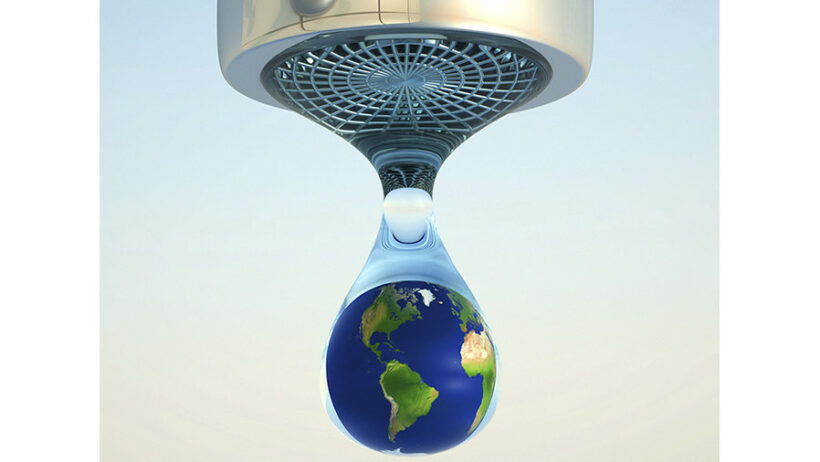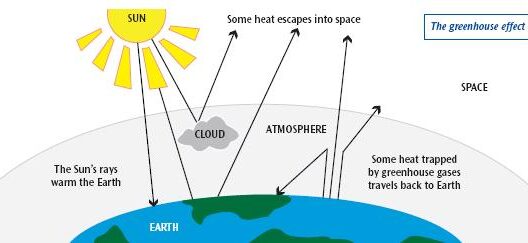Water conservation and reducing global warming are intimately linked. As our planet grapples with climate-induced shifts, adopting water-smart living practices emerges as an effective strategy to combat these compounding crises. By using less water, not only can we alleviate the strain on our natural resources, but we can also mitigate the release of greenhouse gases inherent in water management systems. This concerns everyone—individuals, communities, and industries alike. Here’s how you can embrace a less water-intensive lifestyle while contributing positively to the environment.
Firstly, consider your daily water usage habits. Each drop counts. Take shorter showers—limit your shower time to five minutes. This seemingly minor adjustment can save gallons of water daily and significantly reduce the energy needed to heat that water, thereby lessening your carbon footprint. Utilize water-efficient showerheads that can reduce water flow without compromising pressure. This device reduces your water consumption and promotes a sustainable daily routine.
Furthermore, let’s address the kitchen, a significant site for domestic water use. Do you allow the tap to run while washing dishes? Reconsider this practice. Instead, fill a basin with warm soapy water for washing and another for rinsing. Besides conserving water, such practices minimize the energy expended on heating water. Also, consider defrosting food in the refrigerator instead of under running water. This shift promotes energy efficiency while reducing waste.
When it comes to landscape management, embracing xeriscaping offers a unique answer to water-efficient gardening. This philosophy advocates for planting native drought-resistant flora, which flourishes with minimal water. By altering your landscape to integrate such plants, you create a sustainable environment while reducing your overall water consumption. This not only aids in the conservation of vital water resources but simultaneously combats the effects of urban heat—an often overlooked concern exacerbating global warming.
Transitioning to a more water-efficient lifestyle can also take shape in personal choices about goods and services. Phenomenally, food production consumes an immense amount of water. The more water used in production, the higher the likelihood of greenhouse gas emissions associated with its transport and processing. A plant-based diet can contribute to significant water savings. Not only do plants generally require less water than meat production, but they also use carbon more efficiently, helping to sequester greenhouse gases. Reducing your meat intake even just a few times a week can lead to substantial water conservation.
Moreover, embracing seasonal eating minimizes your water usage considerably. Local, seasonal produce requires less water to grow and transport. When you choose to support local farmers, you’re not only advocating for your community but also engaging in a powerful water-saving measure that lessens the need for extensive agricultural irrigation systems that are often water- and energy-intensive.
Indoor environments can also become loci for water conservation efforts. Repair leaks promptly; even small drips can accumulate quickly, resulting in significant wastage over time. Additionally, install dual-flush toilets to reduce the volume of water used per flush, thereby decreasing water pollution and treatment needs. Such adjustments not only conserve water but also diminish the energy required for sanitation processes that contribute to global warming.
Taking this mindful approach further enlivens the concept of greywater reuse. Greywater—the wastewater generated from activities like handwashing or laundry—can be treated and repurposed for irrigation or toilet flushing. This method lessens reliance on potable water sources, creating a sustainable closed-loop system that conserves water while boosting your garden’s health.
Furthermore, everyday activities such as laundry and personal care offer opportunities for water conservation. Wash full loads of laundry rather than multiple half-loads, and opt for cold water wash settings to save energy. In the bathroom, limit your water usage by turning off the tap while brushing your teeth and filling a glass of water instead. This simple yet effective habit can save gallons of water, adding up to a significant impact over time.
Incorporating technology into our daily lives also offers innovative solutions for conserving water. Smart irrigation systems adjust watering schedules based on weather conditions, improving water use efficiency significantly. Meanwhile, smart meters provide real-time data about water use, empowering users to make informed decisions. By leveraging technology effectively, you can not only save water but also play a pivotal role in global efforts to combat climate change.
Lastly, communal responsibility forms a crucial element of water-smart living. Engage with your local community to promote water conservation initiatives. You could organize workshops or events focused on educating others about the importance of water efficiency. Collective efforts can create a ripple effect, fostering awareness and responsible use among neighbors. You can inspire and lead discussions on relevant policies that promote sustainable water practices in your area.
In summary, adopting water-smart living practices contributes significantly to reducing global warming. Through conscious reductions in water use, you not only help preserve a finite resource but also diminish your carbon footprint. By reassessing daily habits, choosing sustainable food production practices, utilizing water-efficient technology, and engaging with your community, each individual has the power to effect change. Embrace the challenge of living water-smart—it’s an essential component of a sustainable future for our planet. It’s time to venture toward a clearer, more sustainable tomorrow.








